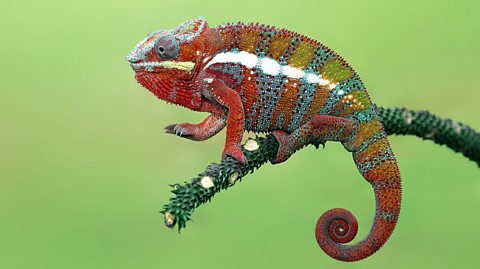Seven Worlds, One Planet is back, and episode two is about the largest and most populous continent on Earth: Asia.
Asia is massive and covers around 30% of the EarthÔÇÖs land area. No other continent has such varied landscapes, wildlife and weather conditions. From the scorching deserts in the Middle East to ice-covered parts of Russia where temperatures can drop below -60╦ÜC, Asia has it all. Find out more about some of AsiaÔÇÖs fascinating animals and its incredible landscapes below.
The worldÔÇÖs largest bears in Kamchatka
The Kamchatka peninsula in Russia is well-known for two things: its high density of volcanoes, and its abundance of Kamchatka brown bears. Standing tall at around 2.5m (8.2 ft) and weighing up to 700kg (110 st), Kamchatka brown bears are among the largest in the world.
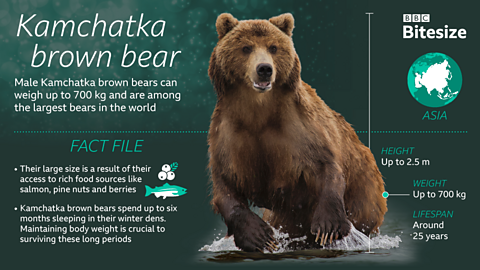
The Kamchatka peninsula is around the size of California and has an estimated population of 10,000 - 14,000 bears. The highest concentrations of bears occur along streams during salmon spawning - this is the time when salmon swim up the river to lay their eggs. At this time, mother bears with cubs can be in danger, as mating males are known to kill cubs to breed with the female. Female bears are unlikely to breed if they have cubs with them.
The tallest mountains on the planet
Most of us have heard of the Himalayas, where Mount Everest, the worldÔÇÖs tallest mountain, is. The Himalayas are the tallest mountain range on Earth and stretch across northeastern India, all the way to Bhutan, a distance of around 2,400km (1,500mi).
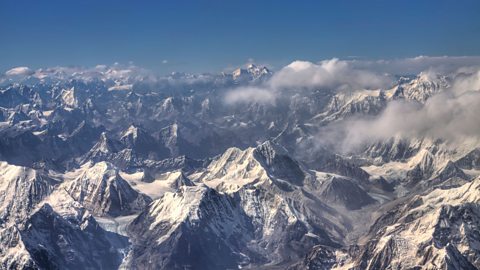
The giant mountains were formed millions of years ago and are still growing today. India was once lying over 6000km (3700mi) south of what we now know as Asia. As Pangaea separated, India, which is on the Indo-Australian tectonic plate, moved north and collided with the Eurasia plate. When this happened, the sea which sat in between the two plates disappeared, and its seabed pushed up to form the Himalayas. All of this happened very slowly over a period of around 150 million years.
Today, a lot of the mountains in the sky are higher than the clouds. Over 100 of them are more than 7,000m (23,000ft) higher than sea level. The Himalayas continue to rise more than 1cm a year, which means that in a million years, they could be 10km higher than they are now. ItÔÇÖs safe to say, that wonÔÇÖt be in our lifetime.
The biggest fish with the widest mouth
Asia is not just home to the largest bears and the tallest mountains. The biggest fish in the world, the whale shark, also lives there. Despite their huge size, whale sharks are relatively gentle creatures that cruise through warmer, tropical seas in search for plankton. They can be found throughout the Indian Ocean, but are known to migrate to shallow waters off Western Australia.
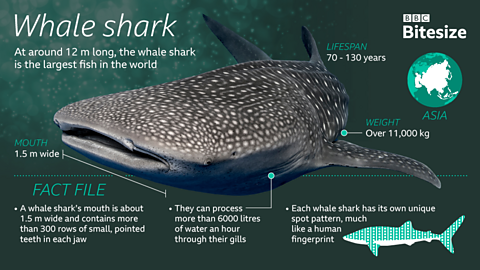
Whale sharks have more than 300 rows of teeth in each jaw, but they donÔÇÖt actually use them to eat. They are filter feeders, which means they extend their huge jaws to scoop up everything in their path. Because of how they feed themselves, their large size and the fact that they're called ÔÇÿwhale sharksÔÇÖ, they could be mistaken for a whale. However, they have cartilage instead of bone - making them a true shark.
Whale sharks and humans actually have something in common - kind of. Each whale shark has its own unique pattern of spots, much like a human fingerprint. Their patterns helps them to blend into their surroundings and can be useful to researchers who are counting populations.
IranÔÇÖs record-breaking desert

Most Brits enjoy the warm weather that summertime brings, but with average summer temperatures of around 16╦ÜC in the UK, itÔÇÖs difficult to imagine temperatures as hot as 60╦ÜC. Well, that's what life is like in IranÔÇÖs Lut desert. Also called ÔÇÿDasht-e LutÔÇÖ, the Lut desert recorded the highest land surface temperature ever in 2005, at a scorching 70.7╦ÜC.
Long periods of strong winds add to the desertÔÇÖs hostility, but also help create an interesting landscape. In the west of the desert, they propel sand at great speeds, creating sharp irregular ridges of compact sand called yardangs. These yardangs cover about a third of the Lut desert and are usually aligned in the direction of the wind. They are so large and impressive that they can be seen from space.
Sir DavidÔÇÖs quest for the Golden snub-nosed monkey
The golden snub-nosed monkey is native to the mountainous snow forests of Central and South West China, and has been a target for Sir David Attenborough for years. The nature presenter says he has been trying to capture the animal on film for around 50 years, after reading about it in a scientific paper in the 1960s. He says that before Seven Worlds, One Planet, he ÔÇ£had never seen film of it beforeÔÇØ. Well, Sir David has finally got his wish.
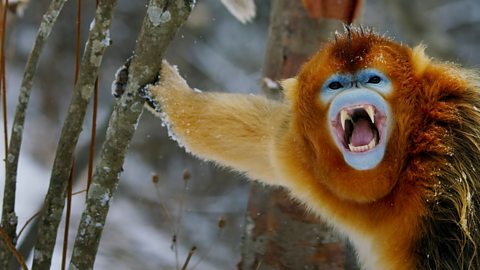
Ancestors of the snub-nosed monkey were once widespread across Asia, until climate and geological activity associated with the last ice age restricted their range. As a result, they have evolved to combat extreme cold, which may explain their nose structure. Scientists think that monkeys with exposed, fleshy noses would be more likely to get frostbite. Nowadays it is estimated that there are around 10,000 of the golden variety left on Earth.
Golden snub-nosed monkeys are very vocal, and can produce 18 types of calls. They also have a remarkable ability to communicate without any visible signs of moving their mouths. Instead, these calls often correspond with their facial expressions. These highly social animals form units of between 20 and 70 during the winter. In summer, up to 600 of them will come together.
Antarctica: Five facts about the icy continent
We take a look at Antarctica's ecosystem and some of its native animals, like the biggest mammal in the world.
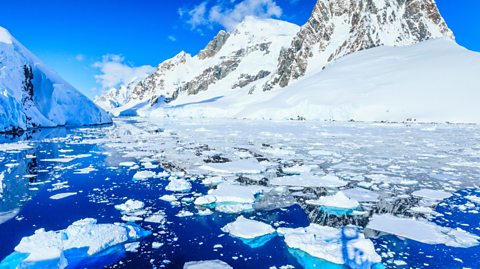
Filming a nature documentary: What could possibly go wrong?
How hard can it be to film a nature documentary? These stories from Seven Worlds, One Planet tell all.
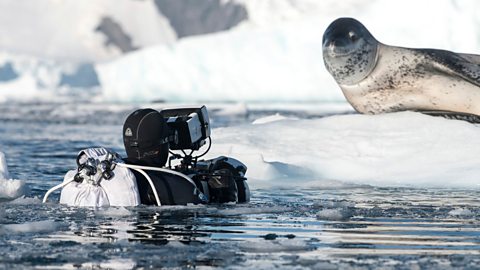
Five ÔÇÿturtle-yÔÇÖ amazing reptiles you probably havenÔÇÖt heard of
Reptile Awareness Day: Five ÔÇÿturtle-yÔÇÖ amazing reptiles you probably havenÔÇÖt heard of.
